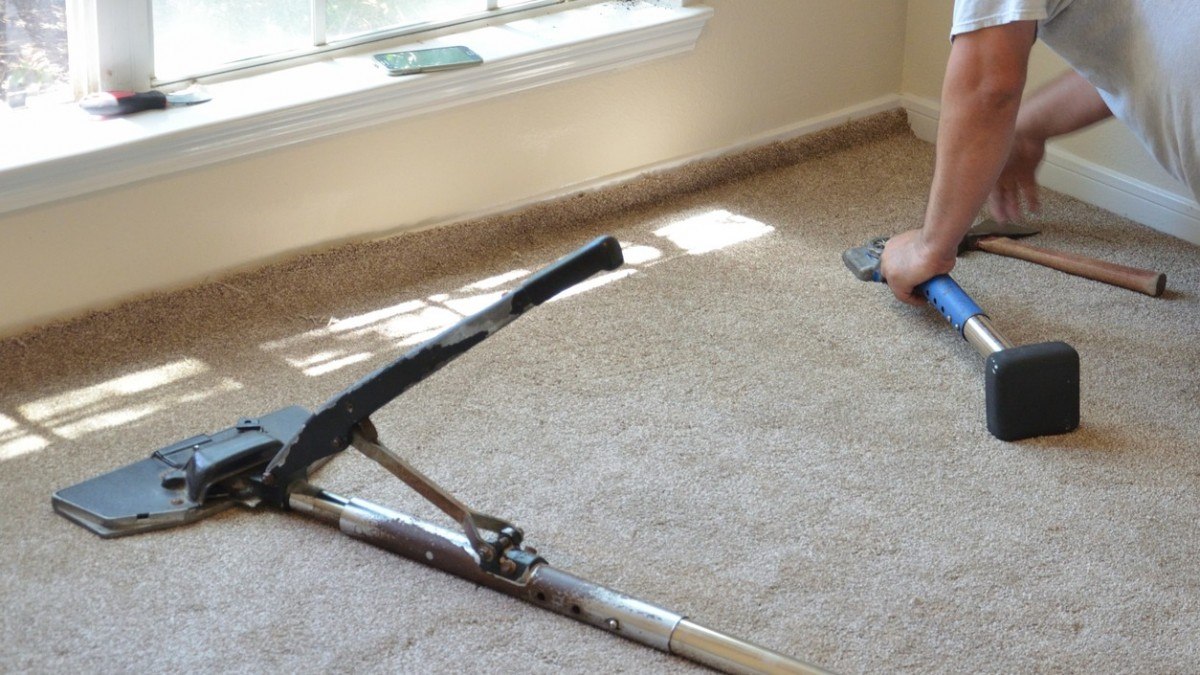- Fountain Hills Ties as Safest Zip Code in Phoenix - Oct 14, 2019
- How Many Single-Family Homes in Maricopa County? - Oct 13, 2019
- Investing in Multi-Family Real Estate in Your 20s - Oct 9, 2019
A friend of mine says that the secret to life is the management of expectations. When it comes to the carpet installation business, his words need to be etched in stone. From my experience, here’s a list of the top scenarios that you may not be anticipating before your new carpet arrives:
1. Due to the large size of the room, there is going to be a visible seam.
Standard carpet rolls are 12 feet wide. Others come in 13’6″ or 15′ widths. In most cases, if your room is larger than 12 feet in any direction, two sections will need to be seamed together. Seams can’t be eliminated entirely, but there are ways to camouflage them well. Darker colored carpets hide seams better than lighter colors. Plan in advance with your installer to have seams placed away from windows, skylights and other light sources. Move them away from high traffic areas. Choose locations for your seams under large pieces of furniture, like beds and sofas.
2. You can upgrade your pad for very little money and it will extend the life of the carpet.
In order to be price competitive, many carpet estimators will quote a 3 or 4-pound carpet pad. That’s a lightweight version and it is really only sufficient in apartment-grade installations or rental properties. Carpet pads are rated on their weight per cubic foot. Bulkier does not necessarily mean better; the pad quality is in the density. A higher “pound” rating means a denser pad. Ask for at least a 6 or 7-pound pad for your home. Denser pads allow your carpet to wear more evenly and have an extended life. The additional cost of a better pad will only set you back a few nickels per square foot. If you choose a pad that is too lightweight, it may void your warranty. A trade industry group, The Carpet Cushion Council, recommends a pad of at least 5 pounds and 3/8″ thickness for light traffic areas, and 6 ½ pounds and 3/8″ for heavy traffic areas (hallways and near exterior doors).
3. We will probably scratch your baseboards, so have matching paint ready.
Installers will need to kick, stretch, cut, pull, tuck and rip the carpet up against the baseboards and shoe molding in your home. It is inevitable that nicks and scratches will be left, even with the highest level of care and professionalism.
4. If you pay us, we can move furniture, but not really heavy furniture.
Installers don’t enjoy moving furniture, but they will relocate small and medium-sized furniture for an additional fee. That doesn’t include everything. Baby grand pianos, fish tanks, billiard tables, gun safes, waterbeds, grandfather clocks and exercise equipment are beyond the scope of your installation contract. Aunt Gertrude’s antique German burl wood armoire isn’t going anywhere today. Neither is the old carpet.
5. We can wrap the carpet over the stair steps if you tell us up front.
The “French cap” or “bullnose” style refers to how the carpeting is wrapped under each stair tread and then stapled to the top of the riser below. This provides a more elegant look than the “waterfall” method which simply drapes the carpet over each step to the next tread step below. The waterfall install does not leave your stair steps with a clean, crisp edge. Expect to pay a few extra dollars per step to wrap the tread due to the additional time and labor required.
6. Interior doors may be removed and not reinstalled.
The new, thicker carpet and/or padding might cause your doors to bind. This means that they rub the carpet and are hard to open. The installers may remove doors from the hinges and set them aside. Later, you will need to have the bottom of the doors trimmed and re-hung by a contractor with an allowance for return air flow. This gap under each door prevents your HVAC system from straining and operating out of balance.
7. We will reuse the old tack strip and may charge you if it is missing.
Some eager homeowners and investors will remove the carpeting in advance to save money on the install. That’s great, but don’t pull up the old tack strip. Carpet installers reuse it if it is still intact. If it is missing, expect to pay extra. If you are carpeting an area that has never had carpeting, you’ll likely see a line item for tack stripping on the final invoice.
8. Have your carpets professionally cleaned every 12-18 months or you will void the warranty.
Fine print in the contract obligates you to keep the carpet vacuumed and professionally cleaned on a regular basis in order to maintain warranty coverage. Some manufacturers will specify that you use a certified carpet cleaner. Save your cleaning receipts.
9. We need to use your electricity during installation.
Carpet installers use electric tools including compressors, seam irons, staple guns, and vacuums. When the electricity is off at the installation address, some installers may be able to source a generator if they know in advance. If not, your new carpet install will be delayed and you may have a return trip charge. Installing new carpet in a rental property between tenants? Make sure that the electricity on.
10. You paid for stain-resistant carpet, not stain proof.
There are no stain-proof carpets. Topically applied sprays like Scotchgard™ need to be reapplied every few years to maintain effectiveness. Stainmaster™ is built into the fibers and protects from the inside out.
11. Carpet removal is a dusty business and we don’t provide a cleaning service.
All that dirt and dander that didn’t quite make it into the Dyson will get released into clouds of dust as the installers remove the old carpet from your home. Close off any areas of the house like a nursery that need to stay clean.
12. If it’s cold, turn the furnace up before installers arrive.
Carpet needs to be installed when the ambient room air temperature and subfloor are 65°F (18°C) or warmer. This allows the adhesive that binds the seams to bond thoroughly. If you are having it installed in cold and vacant home, maintain the temperature above 65°F for at least 24 hours prior to installation.
Do you have additional tips regarding carpet installation? Leave me a comment below.
All of us have moments in our lives that test our courage. Taking children into a house with a white carpet is one of them.
– Erma Bombeck, humorist and writer whose newspaper columns detailed suburban American home life







